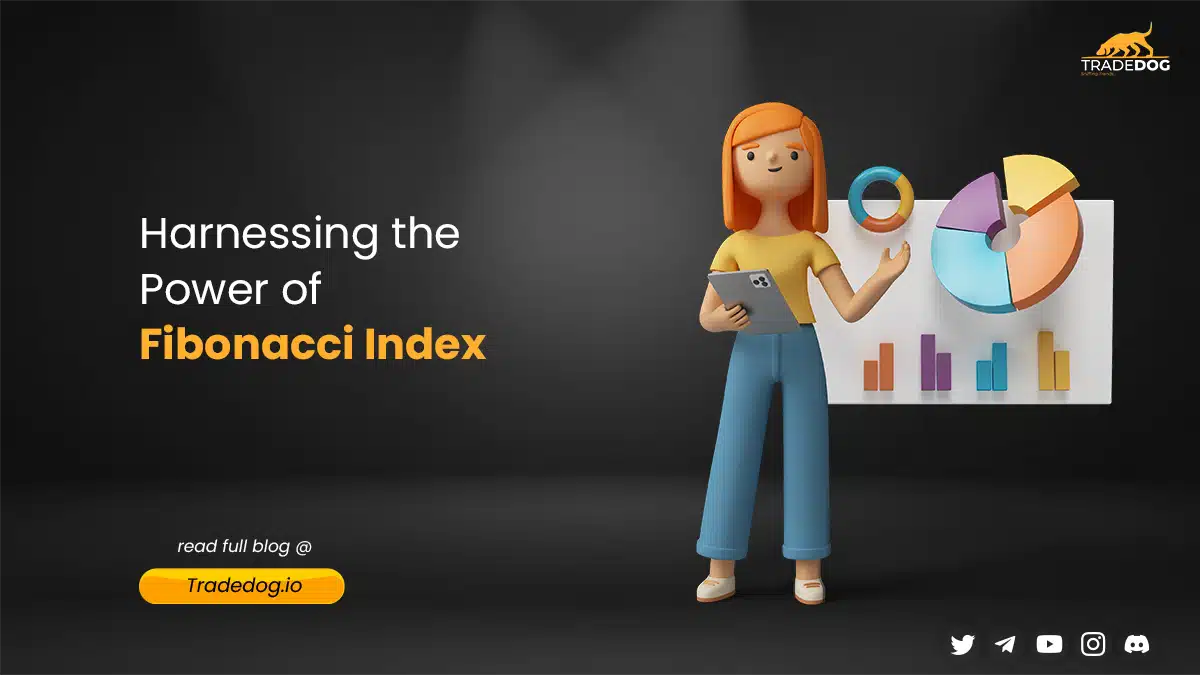Quick Links
- Mistake 1: Lack of Proper Research
- Mistake 2: Emotional Trading
- Mistake 3: Overtrading in Crypto
- Mistake 4: Following the Crowd
- Mistake 5: Ignoring Risk Management in Crypto Trading
- Mistake 6: Failing to Diversify: A Trader’s Pitfall
- Mistake 7: Holding onto Losing Trades
- Mistake 8: Not Having a Trading Plan
- Mistake 9: Trading Based on Rumors
- Mistake 10: Failing to Keep Records
- Mistake 11: Using Too Much Leverage
- Mistake 12: Ignoring Technical Analysis
- Mistake 13: Neglecting Fundamental Analysis
- Mistake 14: Trading Without Stop-Loss Orders
- Mistake 15: Neglecting Market Trends
Welcome to the digital Wild West, where fortunes are earned and lost in the blink of an eye, and where intrepid traders navigate the perilous waters of the cryptocurrency market. If you’re reading this, you’ve probably decided to enter the world of cryptocurrency trading and are eager to learn the ropes.
This post will go over 15 crypto trading blunders to avoid if you want to ride off into the sunset with your hard-earned profits intact. So buckle up, partner, and let’s get started!
Mistake 1: Lack of Proper Research
1. The Importance of Thorough Research Before Trading
Entering the world of cryptocurrency trading without adequate research is like sailing a ship without a compass. Proper research helps you understand market trends, identify potential risks, and make informed decisions, ultimately increasing your chances of success in the volatile crypto market.
2. Common Research Mistakes to Avoid
– Relying solely on social media or influencers for information: It’s essential to cross-check information from multiple, reputable sources.
– Ignoring project fundamentals: Evaluate the project’s team, use case, and technology before investing.
– Overlooking market sentiment and technical analysis: Always consider the broader market context and technical indicators to make informed decisions.
3. Tips for Conducting Effective Research
– Use a combination of fundamental, technical, and sentiment analysis to gain a comprehensive understanding of the market.
– Stay updated with the latest news and developments in the crypto industry by following reliable sources and attending webinars or conferences.
– Join online forums and communities to learn from experienced traders and share insights.
– Develop a habit of maintaining a trading journal to track your progress and learn from your mistakes.
Therefore, conducting thorough research is crucial for success in crypto trading. Avoid common research mistakes and follow the tips mentioned above to make informed decisions and minimize risks.
Mistake 2: Emotional Trading
The Impact of Emotions on Trading Decisions: Emotions can significantly influence trading decisions, often leading to impulsive actions and irrational choices. Fear, greed, and overconfidence are common emotions that can cloud judgment and negatively affect your trading strategy.
Common Emotional Trading Mistakes
– Fear of missing out (FOMO): This occurs when traders jump into a trade due to the fear of missing out on potential gains. This often leads to buying high and selling low.
– Panic selling: In a market downturn, panic can set in, causing traders to sell their assets in a hurry, potentially at a loss.
– Overconfidence: Overconfidence can result in taking excessive risks or making trades without proper analysis.
Tips for Managing Emotions in Trading
– Develop a clear trading plan: Having a well-defined strategy helps you stay focused and disciplined, reducing the influence of emotions on your decisions.
– Set realistic expectations: Avoid setting overly ambitious goals that can lead to frustration and impulsive decisions.
– Practice patience: Give your trades time to develop and avoid making hasty decisions based on short-term market fluctuations.
– Take breaks and maintain a healthy work-life balance: Regular breaks and self-care can help you stay mentally and emotionally balanced, ensuring a more objective approach to trading.
Hence, overcoming emotional trading is crucial for success in the crypto market. By recognizing and managing your emotions, you can make trades that are driven by a trading plan and hence are more likely to exercise profits in the long run.
Mistake 3: Overtrading in Crypto
The Perils of Overtrading
Overtrading occurs when a crypto trader makes excessive trades, often driven by emotions or the urge to make quick profits. This reckless behaviour can lead to significant losses, increased transaction fees, and mental exhaustion.
Signs of Overtrading
– Trading based on emotions, like fear or greed
– Ignoring risk management strategies
– Obsessing short-term price movements
– Neglecting long-term investment goals
Tips to Dodge Overtrading
– Develop a clear trading plan and stick to it
– Set realistic profit and loss targets
– Limit trading hours to avoid burnout
– Regularly review and adjust your strategies
Therefore, overtrading is a dangerous pitfall that can undermine your crypto trading success. Stay vigilant, follow your plan, and keep your emotions in check to sidestep this costly mistake.
Mistake 4: Following the Crowd
The Dangers of Herd Mentality
Following the crowd in crypto trading can be perilous. When traders blindly mimic others’ decisions, they risk amplifying market volatility and experiencing significant losses. This herd mentality could lead to irrational choices and a lack of independent analysis.
Common Mistakes Associated with Crowd Following
1. FOMO (Fear of Missing Out) – Traders often make hasty decisions due to the fear of missing out on potential gains, leading to impulsive buying or selling.
2. Overconfidence – Assuming that the majority is always right can lead to overconfidence, causing traders to disregard their research and instincts.
3. Emotional Trading – Allowing emotions to dictate decisions often results in poor choices, such as panic selling or buying at peak prices.
Tips for Avoiding Herd Mentality
1. Conduct Independent Research – Always perform your analysis and stay informed about market trends and news.
2. Develop a Trading Strategy – Establish a well-thought-out plan, and stick to it to maintain discipline and avoid impulsive decisions.
3. Manage Risk – Set stop-loss orders and diversify your portfolio to minimize potential losses.
4. Stay Objective – Keep emotions in check and make decisions based on logic and data, not feelings.
By steering clear of the crowd and following these tips, traders can make more informed decisions and minimize the risks associated with herd mentality in crypto trading.
Mistake 5: Ignoring Risk Management in Crypto Trading
The Perils of Overlooking Risk Management
Ignoring risk management in cryptocurrency trading can lead to disastrous consequences, as the market’s volatility exposes traders to significant financial losses. A well-planned risk management strategy is essential for long-term success in this high-stakes environment.
Common Risk Management Mistakes
1. Overleveraging – Using excessive leverage can amplify losses, making it crucial to maintain a balanced risk-reward ratio.
2. Neglecting Stop-Loss Orders – Failing to set stop-loss orders can result in substantial losses if the market moves against your position.
3. Lack of Diversification – Concentrating investments in a single asset increases vulnerability to market fluctuations.
Effective Risk Management Tips
1. Assess Risk Tolerance – Determine your risk appetite and allocate investments accordingly.
2. Implement Stop-Loss Orders – Set appropriate stop-loss levels to protect your capital from significant losses.
3. Diversify Your Portfolio – Spread investments across various assets to reduce overall risk.
4. Regularly Review and Adjust – Continuously monitor and adjust your risk management strategy as market conditions change.
By prioritizing risk management, crypto traders can minimize losses, maximize gains, and navigate the volatile market with greater confidence and success.
Mistake 6: Failing to Diversify: A Trader’s Pitfall
The Significance of Diversification
Diversification is crucial in trading as it helps mitigate risks and enhance returns. By spreading investments across various assets, traders can cushion losses from underperforming assets with gains from others.
Common Diversification Blunders
1. Over-diversification: Spreading investments too thin can dilute potential gains.
2. Under-diversification: Concentrating on a few assets increases exposure to risks.
3. Ignoring correlations: Investing in highly correlated assets reduces diversification benefits.
Tips for Effective Diversification
1. Balance risk and return: Consider your risk tolerance and investment goals.
2. Explore various asset classes: Combine stocks, bonds, and other assets to create a well-rounded portfolio.
3. Monitor correlations: Regularly review asset correlations to ensure effective diversification.
Remember, diversification is a trader’s safety net. Don’t let it slip away!
Mistake 7: Holding onto Losing Trades
Sunk Cost Fallacy in Trading
The sunk cost fallacy occurs when we continue investing in something due to the resources already invested, despite evidence that it’s not profitable. In trading, this means holding onto losing trades, hoping they’ll turn around, instead of cutting losses.
Common Mistakes
1. Emotional attachment: Traders may become emotionally attached to a stock, making it difficult to let go.
2. Confirmation bias: Traders may seek information confirming their beliefs, ignoring contrary evidence.
3. Fear of admitting failure: Pride can prevent traders from admitting a losing trade.
Tips for Cutting Losses
1. Set stop-loss orders: Establish a predetermined exit point to automatically cut losses.
2. Review your trading plan: Regularly assess your plan and make adjustments as needed.
3. Embrace failure: Accept that not all trades will be winners and learn from your mistakes.
Mistake 8: Not Having a Trading Plan
The Importance of a Trading Plan
A trading plan is essential for navigating the financial markets. It serves as a roadmap, guiding traders to make informed decisions and manage risk effectively. Without a plan, traders are left susceptible to emotional decisions and impulsive actions.
Common Mistakes Without a Trading Plan
1. Overtrading: Traders can fall into the trap of making too many trades, racking up fees and increasing the likelihood of losses.
2. Inconsistent strategies: Without a plan, traders may switch between strategies, causing confusion and poor performance.
3. Poor risk management: Failing to set stop-loss orders or position sizing can lead to significant losses.
Tips for Creating an Effective Trading Plan
1. Set clear goals: Define your financial objectives and time horizon.
2. Choose a trading style: Determine whether you’re a day trader, swing trader, or long-term investor.
3. Develop a trading strategy: Research and select the most suitable trading approach for your style.
4. Manage risk: Set stop-loss orders and utilize proper position sizing to protect your capital.
5. Evaluate performance: Regularly review your trades and adjust your plan as needed.
The trading plan is the backbone of a successful trader. Avoid common pitfalls and enhance your trading performance by crafting a well-thought-out plan that suits your unique needs.
Mistake 9: Trading Based on Rumors
Trading on rumours can be enticing, but it’s a dangerous game to play. We’ll discuss the perils of such trading, common mistakes traders make, and tips to steer clear of the rumour mill.
The Dangers of Trading on Rumors
Trading based on rumours is a risky strategy, as it’s built on unverified information. The stock market is notorious for its unpredictability, and rumours only add to the uncertainty. Acting on hearsay could lead to significant losses and have detrimental effects on one’s investment portfolio.
Common Mistakes Associated with Rumor Trading
- Failing to verify the information: Traders often take rumours at face value, without doing their due diligence to confirm their validity. This can result in ill-informed decisions and potential losses.
- Overconfidence in one’s instincts: Some traders might believe they have a unique ability to separate fact from fiction when it comes to rumours. However, even experienced investors can fall prey to false information.
- Herd mentality: Traders might be influenced by the actions of others, assuming that the majority must be correct. This can lead to impulsive decisions based on rumours instead of actual data.
- Emotional decision-making: The excitement of making quick gains can cloud traders’ judgment, causing them to act hastily on unsubstantiated information.
Tips to Avoid the Rumor Mill
To minimize the risks associated with trading on rumours, consider the following tips:
- Always verify the information: Before acting on any rumour, take the time to research and confirm its validity. Consult multiple sources and cross-reference data to ensure accuracy.
- Maintain a level-headed approach: Avoid emotional decision-making and overconfidence in your abilities. Approach every trade with a calculated, objective mindset.
- Diversify your investment strategy: Instead of solely relying on rumours, diversify your trading strategy by incorporating various investment tactics, such as fundamental and technical analysis.
- Be selective with your sources: Choose credible, reputable sources for your information, such as trusted financial news outlets and expert analysts.
- Create a risk management plan: Implement risk management strategies, such as setting stop-loss orders and position sizing, to protect your investments in the event of a rumour-driven market downturn.
Mistake 10: Failing to Keep Records
Trading relies heavily on data analysis and well-informed decision-making. In this pursuit, neglecting to maintain records can lead to devastating consequences. Let’s dive into the significance of records, the common errors, and some valuable tips for effective record-keeping.
Importance of Keeping Records in Trading
Accurate records are the backbone of a successful trading career. They serve multiple purposes:
Evaluate past performance to refine strategies
Track progress towards financial goals
Provide tax documentation and audit trails
Common Mistakes Associated with Not Keeping Records
Without a proper system in place, traders risk falling victim to critical mistakes:
Misjudging trends due to a lack of historical data
Forgetting the details of past trades, leading to repeated errors
Difficulty in managing multiple trades and investments simultaneously
Incurring penalties during tax filing due to inaccurate or missing documentation
Tips for Effective Record-Keeping in Trading
To avoid the pitfalls mentioned above, implementing the following record-keeping practices is highly recommended:
- Establish a Routine: Set aside time daily or weekly to update and organize your trading records. Consistency is key to maintaining accurate data.
- Utilize Trading Journals: A trading journal is a useful tool to document and analyze your trades. Include crucial information like entry and exit points, trade sizes, and the reason behind each trade.
- Leverage Technology: Make use of advanced record-keeping software and apps designed specifically for trading. These tools can help you automate the process, maintain well-organized records, and easily track your progress over time.
- Maintain Separate Records for Different Markets: If you’re trading in various markets, it’s essential to create individual records for each. This will help you better analyze performance and identify market-specific strategies.
- Backup Your Records: Ensure you have backups of your trading records, either digitally or in hard copy. This will safeguard your data and allow you to access it even in case of unforeseen events or system failures.
Record keeping plays a crucial role in the success and growth of a trader’s career. By implementing effective record-keeping practices, traders can enhance their decision-making, reduce stress, learn faster, maintain tax compliance, and monitor their progress with greater ease.
Mistake 11: Using Too Much Leverage
The Perils of Excess Leverage
Common mistakes with excessive leverage include:
Overconfidence: Investors may become overly optimistic, ignoring the potential downside risks. Lack of diversification: Concentrating assets in a single, highly-leveraged investment increases vulnerability. *Insufficient risk management*: Inadequate assessment of risks can lead to sudden, unexpected losses.
Avoiding the Pitfalls of Leverage
To minimize the dangers associated with leverage, consider the following strategies:
- Maintain a diversified portfolio: Spread your investments across different asset classes to reduce the impact of any single investment’s failure.
- Set a reasonable leverage ratio: Establish a limit on the amount of leverage you use, based on your risk tolerance and financial goals.
- Conduct thorough risk assessments: Evaluate the potential risks of each investment and ensure you have an adequate buffer to absorb potential losses.
- Monitor your investments closely: Keep a close eye on your investments and make adjustments as needed to control risks and protect your capital.
Mistake 12: Ignoring Technical Analysis
Technical analysis is an essential tool for traders and investors, as it helps them make informed decisions by evaluating past market data, such as price trends and trading volume.
Mistakes Associated with Ignoring Technical Analysis
Relying solely on fundamentals: While fundamental analysis provides valuable insight, it only offers a partial view of the market. Ignoring technical analysis can result in missing crucial price signals and momentum shifts.
Failing to identify trends: Technical analysis is vital for recognizing market trends and determining the best entry and exit points. By not utilizing technical analysis, you may miss out on significant opportunities or make poor timing choices.
Overlooking support and resistance levels: Technical analysis helps identify key price levels where buying or selling pressure may change. Ignoring these levels may result in unexpected reversals and disappointments.
How to Avoid the Risks of Ignoring Technical Analysis
- Combine fundamental and technical analysis: Utilize both fundamental and technical analysis when making trading or investment decisions. This approach offers a more comprehensive understanding of the market and helps to uncover potential opportunities.
- Develop a trading plan: Establish a well-defined trading plan that includes clear entry and exit points, risk management strategies, and a framework for evaluating your progress over time. This plan should integrate both fundamental and technical analysis.
- Use trading tools and platforms: Take advantage of trading tools and platforms that provide access to technical analysis features, such as charting software and technical indicators. These resources can help streamline your analysis process and improve your decision-making.
- Stay updated with market news and events: Keep track of market developments, news, and events that may impact your trading or investment strategies. Being informed about the market is crucial to making well-rounded decisions, as it helps you understand how fundamentals and technicals may interact.
Take the time to learn and understand the fundamental concepts, develop a comprehensive trading plan, utilize appropriate tools and resources, and seek guidance from experienced professionals.
Mistake 13: Neglecting Fundamental Analysis
Mistakes from Neglecting Fundamental Analysis: When investors ignore fundamental analysis, they risk making several common mistakes:
- Relying solely on technical analysis, which only provides a partial picture and can lead to short-term trading. Investing based on emotions, such as hype or fear, instead of researching the underlying business. Overlooking a company’s financial health, such as revenue, profitability, and debt levels, could impact its investment’s success.
- Ignoring market trends and economic indicators that can affect an industry or company’s performance. This may cause investors to miss potential opportunities or put their money in a declining industry.
- Failing to diversify their portfolio can make them vulnerable to market volatility and specific market risks.
Tips for Effective Fundamental Analysis
To avoid the risks associated with neglecting fundamental analysis, investors should follow these steps to improve their investment decision-making process:
- Incorporate technical analysis: Use technical analysis tools to identify market trends, determine entry and exit points, and gauge the overall market sentiment.
- Diversify your portfolio: Minimize risk by investing in a diverse range of tokens, sectors, and asset classes.
- Stay informed: Continuously monitor industry news, market developments, and economic factors that could impact your investments.
- Develop a long-term perspective: Focus on the long-term growth potential of an investment, rather than chasing short-term gains.
- Seek professional advice: If necessary, consult with financial advisors or experts to help guide your investment decisions and ensure you are making well-informed choices.
Mistake 14: Trading Without Stop-Loss Orders
Understanding Stop-Loss Orders and Their Significance
Stop-loss orders serve as a safety net for traders, allowing them to set predetermined price points at which they would like to liquidate a position to minimize potential losses. This financial tool is invaluable in mitigating risks that are inherent in the volatile trading environment.
Common Pitfalls of Trading Without Stop-Loss Orders
Excessive Losses: In the absence of stop-loss orders, traders might endure hefty financial damage due to uncontrolled losses. Emotional Trading: Ignoring this risk management method might lead to emotional trading decisions, often causing traders to let losses run or exit a trade prematurely. Limited Control Over Open Positions: Without stop-loss orders, traders have limited control over their open positions, making it difficult to manage risk effectively.
Overconfidence: Trading without stop-loss orders can foster a false sense of security and overconfidence, leading to poor decision-making and potentially significant losses.
Lack of Discipline: Neglecting the use of stop-loss orders can result in a lack of discipline in trading, causing traders to disregard crucial risk management strategies.
How to Implement Stop-Loss Orders Effectively
- Before entering a trade, determine your risk tolerance and set appropriate stop-loss orders accordingly. This will help protect your financial capital in the event of a significant market downturn.
- Consistently adhere to your stop-loss orders to maintain disciplined trading practices, and avoid adjusting them based on emotions or irrational decisions.
- Regularly review and adjust your stop-loss orders as needed, taking into consideration changes in market conditions, new trading strategies, or changes in your risk tolerance.
- Utilize a combination of technical analysis, fundamental analysis, and market sentiment to make informed decisions about where to set your stop-loss orders.
- Consider using trailing stop-loss orders, which adjust automatically as the market moves in your favour, granting you the flexibility to lock in profits while still providing downside protection.
Mistake 15: Neglecting Market Trends
Market trends represent the general direction in which an industry or financial market is heading. They play a crucial role in helping businesses to remain competitive, profitable, and relevant. In this article, we will discuss the perils of neglecting market trends and offer tips to avoid this pitfall.
Beware the Common Mistakes
- Ignoring market trends can lead to several errors that harm a company’s growth, such as: Sticking to outdated business models
- Failing to adapt to consumer preferences
- Inability to compete with emerging market players
Master the Art of Identifying and Following Trends
- To stay ahead of the curve, follow these tips: Research industry news and updates 2. Attend conferences and networking events to gain insights from industry leaders and peers
- Utilize data analytics tools to track market behaviour and identify patterns
- Engage with customers and gather feedback to better understand their needs and preferences
- Develop flexible business strategies that can be easily adapted to changing market conditions
Conclusion
If you’re contemplating entering the world of cryptocurrency trading, it’s essential to be aware of the most frequent errors traders commit to avoid them. Inadequate research, disregarding market trends, and excessive trading can all lead to significant losses. However, numerous strategies can help you achieve success, including:
- Staying disciplined and patient
- Diversifying your portfolio
- Managing your emotions
- Keeping thorough records
It’s vital to recognize that trading is a long-term endeavour that requires dedication and hard work. Keep in mind, trading success is the result of diligent effort, persistence, and a robust knowledge foundation – it is not a magic lamp that grants effortless wealth. Best of luck!













